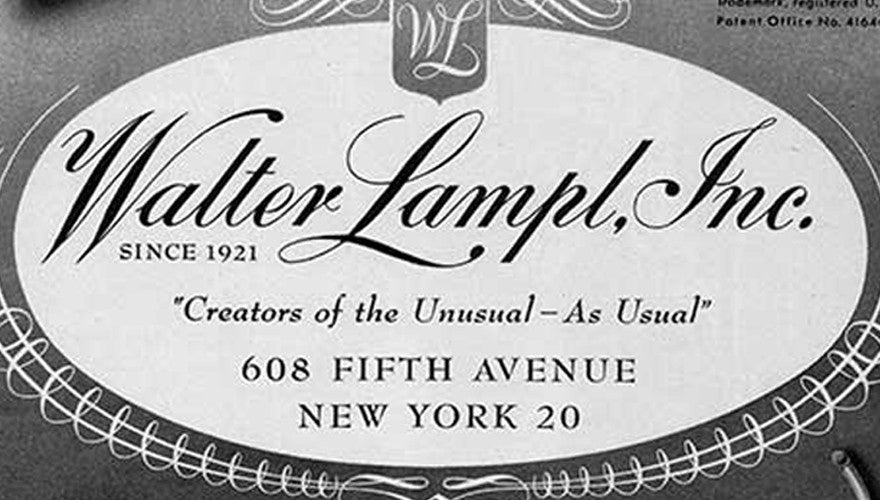
Spotlight on a maker: Walter Lampl
Share
Of all the makers’ marks that appear on charms, Walter Lampl’s is possibly the most sought after, due to the intricacy and quirkiness of many of his designs and the wide variety of love tokens that he produced.
This ingenious and charismatic American rose from humble origins to become one of the 20th Century’s preeminent producers of both precious and costume jewellery, with headquarters in prestigious Fifth Avenue. Walter was born into poverty in 1890s New York, but was ambitious from an early age, selling newspapers in the street as a child and, in his teens, watch chains that he created from long lengths of chain that he had purchased. And so was born his passion for making jewellery.

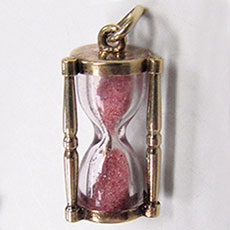

Founded in 1921, The Lampl Company NY designed particularly unique and often whimsical jewellery and vanity items such as a combined cigarette case and make-up compact with mirror set with gems, consistent with the firm’s maxim, ‘Creators of the Unusual, As Usual’. The company catered for a wide spectrum of tastes and budgets, but the quality of craftsmanship was the same with every piece, regardless of the value of its elements, whether they be silver or platinum, coral or diamond.
The innovativeness of the The Lampl Co was most evident in its charm designs, which were celebrated for their novelty and exquisite detail. Many had moving parts, tiny mechanisms that could be operated or contained pictures or concealed messages. In the late 1930s, Lampl was granted exclusive rights to produce the souvenir charms for the New York World’s Fair Corporation and this lucrative agreement facilitated the expansion of Lampl’s distribution so that his creations could be enjoyed far and wide. Both of the charms designed for the World’s Fair were mechanical masterpieces and reinforced Lampl’s reputation for miniscular excellence.
Another design for which Walter Lampl’s company is famous is the Bundles for Britain charm. This highly collectable miniature box, sold in the US during WWII to raise funds for the British War Relief Society, has windows on all four sides, through which can be seen a tiny silk Union Jack Flag (that can be taken out, but not advised, due to its age and fragile nature). The lid is decorated with an enamelled crown and the words ‘BRITAIN DELIVERS THE GOODS’. Bundles for Britain Inc., as marked on the back, was a charity organisation founded by Natalie Wales Latham to support the British war efforts.
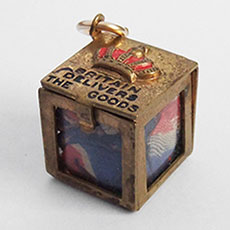
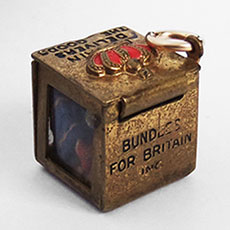
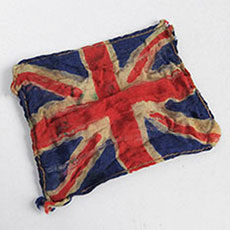
In the early 40s The Lampl Co designed and patented a set of twelve exquisite enamelled heart charms, each representing a month of the year, decorated with the corresponding flower of the month and birthday gemstone of the month. We’ve compiled the collection in the image below, noting that there are various interpretations of flowers of the month. Perhaps they’ve changed in the passing of time or maybe it’s regional. But one thing is for certain, they’re each a charming addition to any Lampl charm collection.
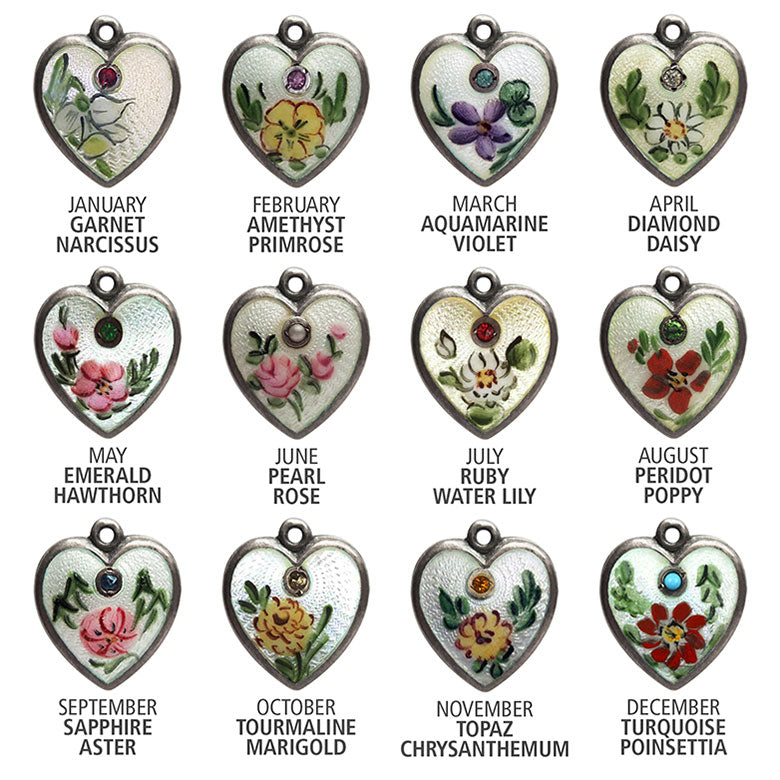
Many of Lampl’s romantic charms were based on creations originally designed for his beloved wife, Sylvia, one of which was a miniature musical box with wind-up mechanism that played I Love You Truly, a song about enduring love that reached number one in the US in 1912.
On the afternoon of Christmas Eve 1945, staff celebrating at The Lampl Company’s annual party witnessed their venerated leader suffer a fatal heart attack. Tragically, Walter Lampl died at aged 50 and Sylvia Lampl and son, Walter Jnr took over management of the company and its grief-stricken, loyal employees.
To keep up with their growing popularity, the company subsequently increased production of its beautiful miniatures and, about ten years after Walter’s death, was reported to be the country’s leading producer of charms and charm bracelets. Their catalogues catered for every passion, hobby, taste and religion and charms were created in both gold and silver, decorated with a wide variety of stones and gems. Amongst the prizes awarded to guests on the popular television show, This Is Your Life (which ran in the US from 1952 to 1961) was a Walter Lampl charm bracelet on which hung symbols of their key life events.
When Sylvia and family made the decision to give up the business, they couldn’t contemplate the prospect of selling to an outsider and, as a result, The Lampl Company ceased trading in 1959.
Walter Lampl’s legacy was not just his inspirational rags to riches story and catalogue of exquisite creations, enjoyed around the world to this day, but his enduring reputation for warmth, generosity and ethical conduct. During the Depression, when work was scarce, he would frequently employ the spouses of staff members. He was known to take pity on young newspaper vendors working in the bitterly cold winter months (having done the same as a boy), buying up all their papers so they could go and get warm. And, during the 1930s, Lampl assisted in the relocation from Germany Jewish family members of Sylvia’s sister’s husband so they would escape the Holocaust. For me, a Lampl charm is not just a delight to behold, but a reminder of the love and humour so characteristic of its maker.
Author: Sarah Martin, The Power of the Pen.
Click here to see Walter Lampl charms currently for sale.
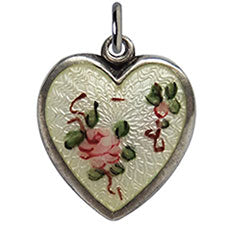

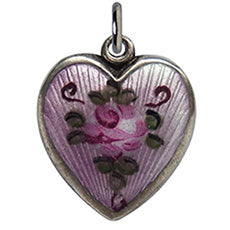

9 comments
I love all things early and mid 20th century, especially unique and innovative jewelry designs. Besides the pieces themselves, I love to read about the designers and entrepreneurs who created them. It’s often difficult to find much information about them, making this article about Walter Lampl much appreciated for its detail and depth. It describes him as well-rounded businessman, caring company leader, and devoted family man. Having just recently discovered his creations, I’m thankful to know about the person behind them. Knowing about his humanity, makes the jewelry more valuable to me, regardless of actual dollar amount.
Following up on the charm I posted about with the letter M.U.K, it is actually “M.J.K.”
I have a charm that is stamped “sterling” I believe the letters “M.U.K”. It’s a bit worn so hard to tell for sure. It looks just like some Lampl charms I’ve found. Any idea what it might be? It’s a heart shaped charm with a lock, green with two flowers, maybe roses.
Hello, I greet you from Europe, from the Czech Republic. I am interested in the Lampl family. Can you please write Walter’s date of birth and the names of his parents with dates of birth or grandparents? I assume they came from Europe, I would like to know from where and when? I wish you a nice day and thank you for the beautiful article. O. Kortus
Hi wondering if you could help please 😊. I have a silver brooch that’s stamped sterling. I’ve done loads of research and I’m convinced it’s a Walter lampl design. It’s definitely old enough and the stone is quite possibly citrine. I just can’t find the makers mark, I don’t know if it’s just worn from age. Would be greatful for any help given. Thanks!